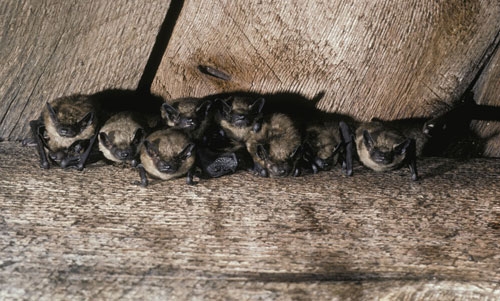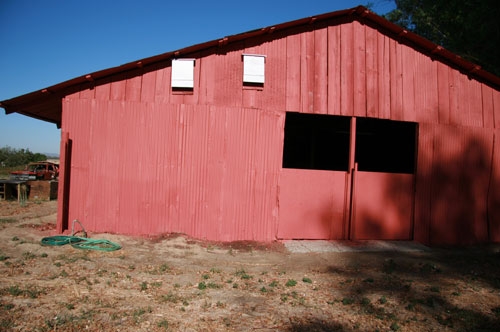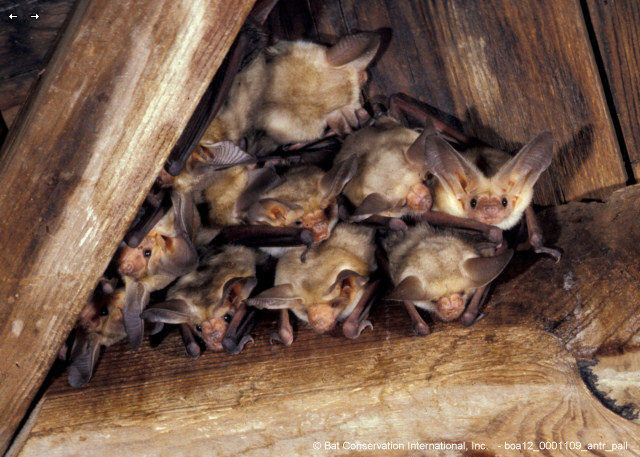Bats pack a punch for pest control
The arrival of spring heralds the return of bats to California’s Central Valley. Every year, hundreds of thousands migrate to this area. Some come from local areas where they hibernate; others species travel over 1,000 miles from their southern overwintering grounds. How bats find their way home is still a mystery, but studies on bat migration suggest they use a combination of factors such as the earth’s magnetic field, stars and landscapes. Many bat species return to where they were born, and then have their own young pups, just like salmon finding their way up rivers, to spawn where they hatched.
California is home to 25 species of bats. All are insectivorous, with the exception of two species in the Southern California desert that feed on pollen and nectar. Here in the Central Valley there are seven common species of bats including red, hoary, pallid, big brown, and Mexican freetailed bats, as well as California myotis, and Yuma myotis, sometimes referred to as little brown bats.
Farmers welcome bats to their farms every year because they are voracious predators of pests including stinkbugs, cucumber beetles, and moths such as cutworms and armyworms that plague crops. Mosquitoes, midges and flies are also a favorite prey. Studies by UC Cooperative Extension in Yolo County and the UC Davis Department of Wildlife, Fish, & Conservation Biology are looking at the impact of bats on codling moth control in walnuts, a serious exotic pest that costs the walnut industry tens of thousands of dollars every year to control. Current data suggest that orchards with colonies of bats have higher bat activity than those without bats.
Bat colonies can be attracted to farms with bat boxes, which are similar to birdhouses, but the opening is on the bottom where bats fly in and out. These boxes need to be placed on structures, such as barns, at least 10 feet off the ground where they get morning sun and afternoon shade. Proximity to water is important as bat houses within a quarter mile of open water have higher occupancy than those more distant. Houses on poles are seldom used and those in trees almost never. Houses on poles likely cool down too much at night (pups are born hairless) and those in trees are vulnerable to predators such as possums and raccoons. The Yolo County Resource Conservation District in Woodland builds and sells bat houses for those interested in installing them on their farms.
Sometimes bats roost where they are not wanted. If this occurs, excluding them from the area is the best way to remove them. However, this should not be done between the end of May and early August when bats have their young. Generally they have one offspring per year, with many weeks before the pups can fly. Insectivorous bats generally live for at least 10 to 15 years. Contact the UC Cooperative Extension Service in Yolo County for more information on excluding bats from buildings. If one is found in your house, simply turn out the lights and open the doors or windows and it will fly right out (they’re as scared as you are!).
Injured and orphaned bats are occasionally found on the ground. Never touch a bat with bare hands as they can carry rabies. If one is found on the ground, use gloves or a dustpan and broom to gently pick it up and put it in an area where predators such as cats or dogs cannot get to it. The bat will usually fly away at some point. If a bat is obviously injured or sick, contact the California bat rescue unit and someone will come get the bat to try to nurse it back to health to release it back in the wild.
Bat numbers are in serious decline, so all the protection they can get is welcome. White nose syndrome, a fungus that infects hibernating bats, has killed millions of bats back East. This disease is spreading across the U.S. like a tsunami. Wind turbines are also having a devastating impact on bats, killing tens of thousands every year. Some die from hitting the blades, but most are killed when they fly into a low-pressure zone caused by the rotating blades (about an acre around the industrial wind turbines) and their ear drums or lungs burst. Birds can take the change in air pressure, but bats are more sensitive.
Migration is the most dangerous time for bats because they become concentrated as they move, making them more vulnerable to dangers, such as wind turbines. Since little is known about the migratory movement of bats, it is crucial that we develop a better understanding of their seasonal whereabouts so hazards are minimized. Wind turbines especially should not be placed in their migratory pathways.
For those interested in learning more about bats, contact the Yolo Basin Foundation. Every summer they lead tours to watch several hundred thousand bats leaving their roost at dusk under the Sacramento causeway to forage for insects, helping farmers with natural pest control.
Comments:
Bats are classified as pest species due to their stray invasion of human properties, habits of living in human houses and structures. Bats will infest almost everywhere which can provide warmth and security this is because they tend to be nocturnal mammals. Most common complaints includes:Bats roosting in attics,Bats roosting in chimney,Bad odour due to bat droppings,Bats swarming around buildings, Loose bat flying or stuck inside rooms





Songbird, Bat and Owl Boxes
Publication Number: 21636
Author: HEATON, LONG, INGELS, HOFFMAN
Inventory Type: Paperback
Language: English
ISBN-13: 978-1-60107-485-0
Copyright Date: 2008
Length: 51 pp
Posted by Adina Merenlender on February 12, 2013 at 11:02 AM